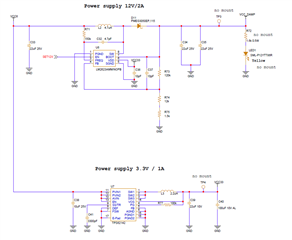Other Parts Discussed in Thread: TPS61178
Tool/software:
Hi all,
I have few questions about configuration of LM2623.
My customer designed the circuit with the following configuration:
Vin:8V
Vout:12V
Iout:2A
1) Is the above I/O configuration possible with this device?
If an efficiency is 80% based on the input/output relationship, the input current can be calculated to be approximately 4A, but is it possible?
2) If the Vout is set to 12V, 12V will be applied to the VBOOT pin, which is outside the range of the absolute maximum ratings.
Is it not possible for this device to output 12V?
3) My customer is designing RF1: 120kΩ, RF2: 13.5kΩ.
This is outside the recommended range of 50k to 100kΩ, but is this OK?
Best Regards,
Ryusuke



